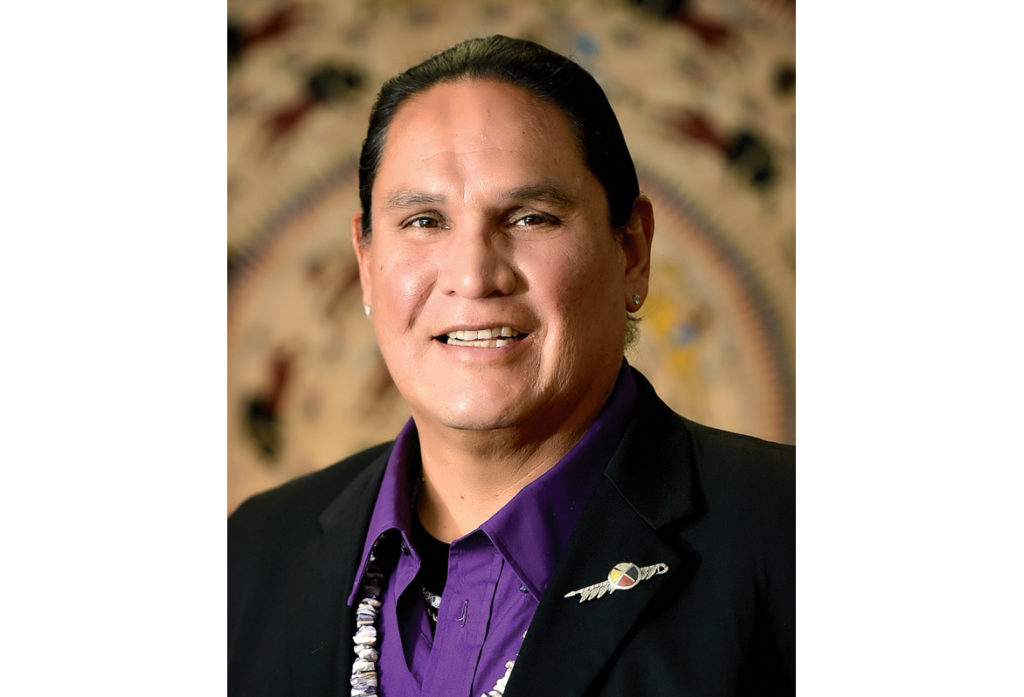As 2023 comes to a close, members of Indian Gaming magazine’s Editorial Advisory Board share their insights and predictions for the coming year. Here is what they had to say…
Dike Bacon, Principal / Business Development Leader
HBG Design

2023 has proven to be another robust year and I expect 2024 to be the same. Excluding borrowing costs, many of the 2022 and even Covid-era project development challenges have started to mitigate. Most planning and design projects, and construction phase projects from 2023 and prior, have continued full steam ahead throughout the year.
Properties are reporting healthy spending and visitation, and the expectation is a continuation in 2024. Doom and gloom recession predictions just haven’t materialized. Regional and super regional destinations are reporting significant upticks in multi-night travel stays and non-gaming amenity spending. Of course, competition in all markets remains super intense. Everyone is always looking for bigger and better entertainment experiences. Progressive properties are responding by stepping up their offerings to meet these demands and expectations. They are renovating, expanding, or proposing new projects in 2024 to stay ahead of the competition.
Overall domestic economic dashboard indicators show a positive compass heading for the gaming industry in 2024. Tribes I’ve spoken to are highly optimistic about the future but also very mindful of costs. Interest rates may have finally peaked but will remain elevated throughout 2024. To get projects designed and built going forward, owner/architect/contractor teams will need to be aggressive and creative to find innovative cost control strategies. An effective approach is to work closely with operations teams to carefully evaluate and drill down building programs to essential amenities and elements that will attract guests with specific experiences. This keeps project costs down while delivering innovative amenities to drive traffic.
It appears the labor shortage will continue in 2024 and possibly well beyond. Operations teams should identify areas in a facility that can be operated with less personnel without affecting the overall guest experience. It is important for owners to conduct market feasibility studies to identify specific opportunities that will attract the most customers and generate higher revenues. These studies will guide the type and size of investment needed, as well as the unique non-gaming amenities required to meet market demand in 2024.
Tracy Burris, Executive Director Office of Public Gaming
Muscogee (Creek) Nation

In 2023, I was looking forward to watching the continued growth of Class II gaming throughout Indian Country as new technology was being introduced, including wireless options, and that new technology began to be integrated with our current systems. These new technologies broaden the types of applications to which they can be applied and expands the numbers and types of different tasks they can accomplish. And we are already seeing use of cashless systems and digital wallets create the need for alterations to standards nationally and at tribe level. Using these types of systems implements lessons that we learned during Covid and will assist with prevention of extreme closures in the future. They also create new complications for protecting our back-of-house systems. Cybersecurity will continue to be a challenge faced by our properties, both brick and mortar and the growing online environment. Unfortunately, in my part of Indian Country, we failed to move the technology needle significantly with the disintegration of discussions with the state.
But we are not standing still. We have taken on the challenge to use cashless systems and digital wallets and we are working to integrate systems that haven’t been previously used at our properties to supplement our current systems. That includes using technology to identify our tribal and state boundaries and keep our games attractive to players to the maximum extent possible. Integrating our systems with geofencing will require collaboration with cellular providers and app/web designers to keep games working on a wide variety of devices. Another benefit of our developing technology is the added security we gain through the use of technology tools, such as facial and weapon recognition programs. While this technology has been around for a while, it is now indispensable to the increasingly digital environment we operate in. It is a necessary operational tool to keep people playing games safely and to assist our regulatory efforts with incidents that occur on the property.
My call to action for 2024 is for the National Indian Gaming Commission (NIGC) to review and make changes to their bulletins to give consistent direction with the new cyber environment. This will take collaboration with tribal gaming regulatory authorities and tribal gaming operations. These conversations should not detract from, but continue alongside, the current important issues already being highlighted by the NIGC. The NIGC has been leading the efforts to keep these concerns at the forefront of discussion, and I hope they will continue all the work they have done and continue to lead on these issues.
2024 will bring new challenges and celebrations with new technology impacting our gaming systems, the possibility of a new NICG Chairman, continued advocacy for issues that impact us, and much more. I am ready for the for the 2024 challenges.
Andrew Cardno, Co-Founder and Chief Technology Officer
Quick Custom Intelligence (QCI)

As we approach 2024, the Indian gaming industry confronts a landscape dramatically reshaped by external forces. Notably, three dozen cloud providers have ceased services to gaming companies through what’s termed ‘acceptable use mechanisms’ within their contracts. This trend is more than just a business decision; it represents a significant erosion of the rights of tribal gaming businesses, a control exerted through simple commercial actions of non-tribal entities. These commercial organizations have been subtly gaining contractual and jurisdictional control, often bypassing the sovereignty of tribal nations.
My experience underscores this reality. I’ve personally witnessed a sovereign nation unable to sign up for a cloud service because the provider’s paperwork failed to recognize tribal nations. This isn’t an isolated incident; it’s part of a broader pattern where tribal nations find themselves explicitly excluded from digital marketing activities by their providers. Such actions not only undermine the operational autonomy of tribal gaming, but also signal a concerning trend of diminishing respect for tribal sovereignty in the digital domain.
The unilateral decisions by these cloud service providers to alter their policies and exclude tribal gaming entities reflect a deep-seated vulnerability in our current reliance on external digital platforms. The sovereignty of tribal nations over their digital operations is increasingly at risk in an era where data and digital presence are paramount. This situation calls for a robust response from tribal nations. Utilizing the physical boundaries of tribal land is more crucial than ever to create a buffer against these external influences. Tribal nations need to invest in developing independent digital infrastructures within their territories, ensuring they are insulated from non-tribal governmental and commercial overreach.
2024 is not just about ‘why should we trust them?’ It is a year where there must be a realization of the importance of tribal digital sovereignty.
Michael Carter, Director of Client Development
TBE Architects

When considering what the Indian gaming industry will look like in 2024, there are three primary areas that set the stage: increased expansion and renovation, a focus on freshness, and opportunities for tribal youth.
In 2023, we saw a 32% increase in RFPs over the previous year, with nearly 85% focused on casino or hospitality expansion and renovation. There are a lot of exciting changes happening at tribal casinos across the country. To stay relevant in a constantly evolving market, older properties are adapting to meet today’s expectations through expansion, offering additional amenities, or through renovations, creating an exciting sense of newness for their guests. With interest rates at a 20-year high, we can expect many of these updates to be completed in phases, thereby avoiding the need to take on excessive debt.
In 2024, we will see a growth in the rising trend toward “freshness,” which takes on a variety of forms. For example, one property went to a greaseless kitchen, offering guests farm to table produce; another is now a smoke-free casino with al fresco dining; and a new build was designed to include natural lighting on the casino floor. I expect we will see more properties adopt “freshness” trends, in addition to increased emphasis on renewable energy and sustainable design.
At a conference earlier this year, one GM was discussing the dramatic shift in focus at his property. His team relocated recruiting headquarters closer to their community center, began offering a shuttle service to employees, and provided advanced training, high quality tools, and career path consultations for new staff. Today’s tribal youth are energetic and innovative problem solvers who want to be involved. In 2024, I expect tribal casinos will continue to create an environment where the youth of their community are engaged early and see opportunities for long-term personal and professional growth.
I feel extremely optimistic about the growth of Indian gaming in 2024.
Chris Creasey, VP National Gaming
Suffolk Construction

In 2024, I foresee a surge in opportunities in Indian Country. With recent compacts, some tribes are seeking expansion in gaming, but also adding entertainment venues. This expansion promises increased construction, design projects, and boosted revenues for tribes.
A noteworthy trend is the integration of technology on project sites. Robot dogs, resembling small canines, traverse job sites, capturing consistent images for precise project evaluation. The utilization of AI for safety is another stride, analyzing project data to anticipate potential injuries and taking preventive measures. Incorporating virtual models in planning mitigates complications upfront, enhancing cost-effectiveness. While these advancements may not cut costs, they do offer cost control, particularly in the face of high interest rates and labor expenses. Financial institutions grapple with liquidity in loan markets, making these technologies pivotal for efficient and predictable construction processes.
In terms of material costs, commodities are gradually returning to pre-Covid levels with better availability. However, mechanical and electrical equipment remains pricey and subject to lengthy lead times. This discrepancy reflects efforts to recover to pre-pandemic conditions. A notable design shift is the increasing use of decorative metal in projects, replacing traditional systems like Exterior Insulation Finish Systems (EIFS). This modern trend employs foam-based materials with stucco finishes.
Project funding dynamics differ for established tribes with solid revenue streams compared to those with limited income sources, such as smaller casinos. The latter often seek partnerships to secure funding. One pressing issue is the labor force. Over the years, the percentage of 18 to 35-year-olds in the workforce has declined from 50% to 35%, while those over 55 years old have increased from 10% to nearly 20%. This demographic shift drives labor costs up, as older workers are typically less productive. Encouraging younger generations to join the construction trades can alleviate this challenge, benefiting the labor market and reducing student debt for apprentices.
In summary, the landscape in Indian Country holds significant potential, but it demands adept integration of technology, careful financial management, and a renewed focus on cultivating the construction workforce of the future.
Beth Deighan, President
Casino Careers Division of Hospitality Online

This past year, HR executives in the gaming/hospitality industry were focused on finding and recruiting talent with the necessary skills, maintaining employee morale and retaining top performers.
To that end, their strategies included investing in diversity, equity, and inclusion; building organizational culture; and increasing retention through employee engagement and employee development.
In 2024, HR priorities in Indian gaming will include incorporating artificial intelligence in HR technology, leveraging benefits for recruiting and retaining talent, rebuilding employee trust through employee engagement strategies, supporting employee wellness, and providing career management programs to support internal mobility.
Artificial intelligence has continued to transform routine HR tasks by alleviating the burden of administrative work, speeding up processes, and freeing HR teams to do what humans do better than computers – build meaningful connections and create innovative solutions.
AI tools can speed up the recruiting process by helping prescreen candidates. AI-powered chatbots can help candidates get answers to pressing questions 24/7, and AI can provide better (and faster) job matching based on candidate profiles.
AI can help improve onboarding by automating communications, tracking employees’ progress, and delivering learning materials. Streamlining the onboarding process with AI also means HR teams don’t have to be overwhelmed with administrative tasks and instead are free to answer employees’ questions and build meaningful relationships, providing a better candidate experience and higher likelihood of attracting and engaging with top talent.
Confronted with a multi-generational workforce, benefit programs will be updated to ensure they appeal to: Baby Boomers who value traditional benefits like comprehensive health coverage, retirement plans, and job security; Gen X who seek flexibility, work-life balance, and benefits such as childcare assistance and career development opportunities; Millennials who want student loan repayment assistance, wellness programs, and remote work options; and Gen Z, the youngest generation in the workforce, who value technology and digital communication tools, diversity, mentorship programs, mental health support, and opportunities for skill development.
The coming year will bring tools and resources to deal with change and create a culture of continuous learning, where employees are encouraged to participate in training programs to develop their skills and qualities needed to succeed in their current and future leadership roles, with the goal of attaining improved performance and productivity and higher employee engagement and job satisfaction.
Grant Eve, Tribal Gaming Government Leader / Partner
Wipfli

Casino operators have achieved record-high revenues and profits since the Covid pandemic. Today, tribal balance sheets are strong, and that gives operators more flexibility.
Casinos need to lessen their reliance on on-premises technology and labor-intensive processes. They need to find new ways to trim costs since they can’t pass higher prices on to cost-conscious consumers. And they need to exploit artificial intelligence (AI), automation and integration to their fullest potential.
AI is getting a lot of attention, but it’s still a buzzword for many casino leaders. Most use cases haven’t been fully tested or scaled. In 2024, we’ll start to see how AI could impact the industry in meaningful ways. Marketing, database management, regulation and finance applications show the most promise.
Leaders also need to keep an eye on cybersecurity. Ransomware and cyberattacks on gaming and resort operations were up last year, and I expect more to follow. Cybercriminals assume that tribal gaming operations are targets to steal data and personal information from. Operators need to prove them wrong with strong defenses, detection and response capabilities. This is now expected to even qualify for cyber insurance policies, which continue to have increased rates and deductibles.
Inflation is finally easing (the expectation is 2.5% in 2024), but consumers haven’t forgotten what high inflation felt like. Casinos need to create exceptional experiences to compete for discretionary entertainment dollars. They have to wow new guests to convert them into loyal customers. The trip spend per customer decreased last year, so guest experience must be a key part of strategy.
Last year, tribal casinos added more Class II gaming machines on the floor. So far, they’ve met expectations. In some states, they’ve even outperformed Class III machines. The state compact fees for Class II machines vary by state, so leaders in some jurisdictions need to budget for cost savings from their gaming shift.
The job market is getting easier to manage. About 26% of households have one member working from home, which is down from the post-pandemic high (37%). But operators can’t let up on recruitment. Talent is a recurring issue, and operators need creative incentives to hire and retain the best workers.
Most operators are ready to settle into more typical conditions. But complacency is not an option. The economic environment, regulations and consumer preferences will never stabilize. Luckily, flexibility is a strength among tribal casinos. Agile operators will be ready for the next big opportunity.
Brett Ewing, Principal
Cuningham

I’m continually amazed by technological advancements, particularly in entertainment. From my office window in Las Vegas, I look out at the Sphere, the stunning LED display that has taken the world by storm. For properties being designed and built in Indian Country, it is more important than ever to find that blend of technology, modern innovation and incorporating the rich history of the tribes. It’s about reinterpreting tribal history in ways that engage both the tribes and the public.
An area of importance in the year to come will continue to be climate action. It is important to design with the climate in mind, to be exploring regenerative design, energy efficiency, and reforestation to protect and enhance the lands we work on. Sustainability has become increasingly vital. With the earth’s changing climate, tribes are more engaged in discussions about the future. From storm patterns to droughts, the unpredictability of the seasons is alarming, yet motivating to emphasize carbon reduction.
The rise of sports betting is also noteworthy. It’s transformed tribal properties, adding a new dimension to entertainment. And the recent F1 race in Las Vegas highlighted the human desire for communal experiences beyond just gaming and technology.
Finally, with regard to hotel design, on some projects there is a shift towards smaller, more efficiently designed rooms. This approach allows for innovative use of space and materials, challenging designers to meet customer needs while reducing initial construction costs.
John Hinton, Principal / Director of Native American Projects
Bergman, Walls & Associates

Tribal casinos continue to be the most visited entertainment establishments in their respective locations. Empty nesters with disposable income remain the highest spenders, but younger generations have shown growing interest in casino entertainment, prompting operators to adapt some offerings to entice them.
Venues of all sizes are expanding their gaming floors and offering more dining, lodging, and entertainment options, adding greater appeal and profitability. Spaces for concerts, trade shows, and family events are designed to attract new patrons and convert them to long-term customers. Multi-purpose spaces can be used for more than one function in any given week. For example, a sportsbook designed so it can be rented or used as an event space during non-peak sporting event times. Operators are also finding ways to use the entire facility to generate revenue, including outdoor space.
As more Native-owned casinos add hotels or become full-scale resorts, dining is becoming a more efficient profit center. Once a patron moves from gamer to overnight guest, food and beverage become the next most lucrative way to add value. We are also seeing the addition of more branded, national chains in food halls and as stand-alone options.
Many properties are also improving the guest experience by reducing the time to get into the facility, and are adding parking garages and other improvements. An increasing number of properties have also added electric car charging stations.
Several properties have remained non-smoking post-pandemic, creating a cleaner, healthier indoor environment and attracting more smoke-aversive patrons. Facilities designed to remove smoke from the air also do a good job of removing other impurities (and lessening the chance of virus exposure).
As more states adopt sports betting, its growth will continue in 2024. Esports and technology, including Virtual Reality (VR), Augmented Reality (AR), and Artificial Intelligence (AI), will play an increasingly important role on online gaming and in brick-and-mortar facilities by elevating the overall entertainment experience and appeal for younger, tech-savvy gamers. AI can also be used to track customer algorithms and develop more customized marketing strategies.
After a post-pandemic resurgence, the industry has begun to flatten, as inflation and recession rumors have customers tightening their budgets. High gas prices will continue to impact tourism, with customers less likely to spend on road trips – especially to rural casinos. Not to fret, as some experts are predicting a big rise in casino gaming in 2024.
Kell Houston, President
Houston Productions

2024 is going to be a challenging road for casino entertainment. So many of the artists tribal casinos have worked with over the past decade or so are aging out and struggle to draw guests. These older acts had large catalogues of hits. These days, you do not find artists with a lot of hits and releases. Properties more than ever need to develop and cater to the younger demographic, and more current and relevant acts. New artists explode on social media and by the time you are really aware of them, prices have gone through the roof.
Speaking of prices, the touring artist’s prices have jumped up 25-30%. Live Nation and AEG are stepping hard into the tribal casino arena. They tend to be very demanding with a kind of ‘bull in the China shop’ attitude. Issues include restrictive radius clauses for their own shows/venues and wanting to tap into the casino money to anchor and support their own tours. Festivals are hugely popular and feature many artists and offer more bang for your buck. Plus, they have very prohibitive radius clauses as well. This all makes our casino entertainment process more challenging. Tribal casinos need a solid, smart strategy and to stick with it. Currently, agents and managers are already working on 2025 holds. To be competitive, tribal casinos need to get ahead of the curve, developing strong and aggressive marketing approaches.
To top this all off, we are going into an election year with conflicts all around the globe. It is going to be a wild ride.
Knute Knudson, Tribal Ambassador
IGT

In 2024, Indian gaming will continue to grow, bolstered by the tribes’ appetite for embracing innovation and implementing meaningful marketing and loyalty program efforts that truly engage and excite players. We will see the continuing trend of new tribal casino openings, featuring state-of-the-art technology and amenities, and the latest in slot and casino management systems innovations, including the evolution of cashless gaming. In addition, hardware replacement cycles will continue to trend higher with demand for compelling new hardware from all manufacturers.
The growth in tribal gaming will also include expansion and diversification in both markets and operations. A great example builds upon the success we have seen with tribal-run casinos in off-Strip Las Vegas locations, with Palms and Mohegan Casino Las Vegas. In 2024, we will see a significant milestone in this progress as we celebrate the first tribal casino on the Las Vegas Strip, when the Hard Rock Casino development comes to fruition. This underscores the point that tribal operators are well-positioned to make significant investments in operations and marketing to ensure that their properties are successful, and the agility with which they can evolve.
A necessary element of progress is conflict, and continued areas of significant political activity in 2024 will include California, Florida and Oklahoma. This is simply an attribute to the fact that tribal gaming will never be complacent, and ultimately, when gaming evolves in other jurisdictions for the benefit of tribes and entertainment of players, we can expect continued advocacy for forms of entertainment such as sports betting. It will be important for tribal governments to protect sovereignty in all areas of tension or conflict.
In summary, 2024 promises to be an exciting and interesting year in tribal government gaming, and I look forward to the continued success of tribal gaming in all the regulated jurisdictions where it operates.
Rick Meitzler, President & CEO
Novomatic Americas

Making calculated predictions for the future of a dynamic industry like Indian gaming involves a degree of experienced and educated speculation. Several key factors could influence the trajectory of the Indian gaming industry in 2024.
Legislation and regulation are likely to play a pivotal role. In 2024, it is reasonable to expect further progress in the online, sports betting direction, as regulatory clarity usually drives industry growth. This development could impact both Class II and Class III gaming establishments, providing an evolving framework for their operations.
The intersection of technology and gaming continues to become more complex. The integration of artificial intelligence in casino gaming has the potential to revolutionize the industry by providing more personalized player experiences. From a game development and design perspective, AI can contribute to the creation of more immersive games by analyzing player behaviors, gaming trends and historical data. AI algorithms can then assist in aligning player preferences and market demand. With these ongoing advancements, AI can also enhance the augmented reality (AR) and virtual reality (VR) by creating more adaptive environments in real-time, creating entertainment experiences that evolve around individual preferences and interactions. Gaming developers may leverage these technologies to enhance user experiences. This infusion of new technologies could extend beyond gaming platforms to influence design and build aspects of casinos, fostering more innovative gaming environments. You are going to see technology entertainment providers work more closely with casinos and entertainment venues to create more experiential gaming opportunities.
Tribal sovereignty, particularly relevant in the context of Class II gaming, may see continued challenges. The relationship between tribal gaming enterprises and state regulations continues to be shaped by ongoing legal discussions. Striking a balance that respects tribal sovereignty while adhering to broader regulatory frameworks will be a critical aspect of this ongoing conversation.
Cybersecurity is another crucial item. The risk of cyber threats continues to increase. In 2024, the Indian gaming sector will witness a heightened emphasis on cybersecurity measures to protect user data, financial transactions, and the integrity of gaming platforms.
Entertainment and social media integration could further define the industry’s landscape. Gaming is increasingly becoming a form of social interaction, and platforms that successfully blend gaming with entertainment and social connectivity may gain more advantages and traction. This merger could extend beyond traditional gaming spaces, and online, creating a more inclusive and engaging experience for users.
In my opinion, the Indian gaming industry in 2024 is poised for growth and transformation, influenced by regulatory developments, technological advancements, and shifts in customer, both B2B and B2C behavior. The industry’s ability to adapt to these changes while addressing key issues such as regulation, cybersecurity, and tribal sovereignty will likely shape its trajectory in the coming years.
Sheila Morago, Founding Partner
Trilogy Group

As I look to 2024, I feel a sense of excitement and optimism in the air as we approach the New Year and all it will bring. Our industry is always leading innovation, whether in technology, how we work, how we play or even how we dine. Just take a quick look across Indian Country and you’ll see for yourself.
Tribal gaming is poised for great things, and has continued to achieve great things, thanks to the exceptional, visionary leadership and hard work of so many. Expansion into new properties is just one of the ways tribal gaming is reaching new heights. Technological innovation, always a hallmark of our industry, continues to allow us to do things we could have never even imagined in 1988, when IGRA was enacted. Today, virtual reality is used in training new personnel at Arizona’s Gila River Resorts & Casinos.
Across the country, innovation and expansion is happening everywhere you turn. We see it in Nebraska, with the ongoing expansion of the Lincoln WarHorse Casino. We see it in Oklahoma, as Osage Casinos open the doors to a new casino in Bartlesville. We see it in Virginia, as the Pamunkey Indian Tribe moves forward with its half-billion-dollar casino project.
We see our industry contributing to the betterment of our communities, in big ways and subtle ways. All of this growth and innovation leads to good-paying jobs for thousands of people across the country. From embarking on massive infrastructure construction projects to sponsoring local Little League teams, tribal gaming is always at the forefront, bringing a wide range of benefits to every community a tribal gaming venue calls home.
I can’t wait to see what we do next.
Kelly Myers, Director of Govt. Affairs
Gaming Laboratories International (GLI)

The future of Indian gaming remains bright and full of opportunities. Indian gaming now spans tribal lands governed by the Indian Gaming Regulation Act, as well as a large footprint into commercial gaming. Tribal operators are purchasing and/or building commercial casino properties in record expansion this past year, and we can expect more of the same in 2024 and beyond.
Evolving and emerging technologies will play crucial roles for tribal gaming operators. Digital payments (which some call cashless wagering), artificial intelligence, and iGaming are converging to expand in the industry. As they converge, we can expect they will drive iGaming as the next expansion following a similar path of the rapid growth of sports betting.
With technology always expanding, regulators must and will work to be more proactive to ensure players, operators, and suppliers are protected – from the traditional casino to online platforms. We are living in a time where it is increasingly important for operators and regulators to work together to embrace new technologies while also being more aggressive in defending against the growing threat of cyberattacks. New technologies highlight the importance of a collaborative working relationship protecting the integrity of the industry against potential threats.
I look forward to seeing the continued development and implementation of effective cybersecurity regulations for tribal nations.
Ernest Stevens, Jr., Chairman
Indian Gaming Association

Sports betting in the United States continues to be the fastest growing aspect of the national gaming market since the Supreme Court’s 2018 decision in Murphy v. NCAA. Thirty-eight states and the District of Columbia have legalized sports betting within their borders. Twenty-nine of these states and D.C. have also approved online sports betting in their jurisdictions.
The Indian gaming industry is likewise evolving to address this changing landscape. In recent years, many tribal governments have added sports wagering components to their brick-and-mortar operations. Several tribes have recently moved to accept online sports wagers through IGRA’s tribal-state gaming compact process and outside of IGRA’s process to conduct sports betting through a state-regulated model.
The question of whether tribes can accept online sports wagers from throughout a state is part of ongoing legal and regulatory debate. Tribal governments are leading this debate, empowered in part by IGRA and the compacts that tribes have carefully negotiated over the past three and half decades.
October 17, 2023, marked the 35th anniversary of IGRA. Congress enacted IGRA in response to the Supreme Court’s 1987 decision in California v. Cabazon Band of Mission Indians. IGRA’s primary purposes are to promote “tribal economic development, self-sufficiency, and strong tribal governments.”
Congress intended IGRA to provide tribes the maximum flexibly to take advantage of modern technology. Tribal governments have consistently updated the types of games offered at their gaming operations, often leading the way with new gaming technology.
The question of whether IGRA limits Indian gaming to Indian lands is well-settled in the affirmative. For decades now, many tribal-state IGRA compacts have included provisions for off-track betting, which has long been an integral part of Indian gaming. While the races may take place off Indian lands, the wagers are accepted at the Indian gaming operation.
IGRA’s tribal-state compacting provisions sought to limit the ability of states to use the compacting process as a subterfuge for imposing state laws on Indian lands. However, at the same time, these provisions are broadly read to permit provisions “directly related to the operation of gaming activities.”
For example, federal courts have unanimously held that tribal-state compacts can limit certain types of gaming outside of Indian lands. These so-called “exclusivity provisions” offer the tribes “meaningful concessions” from the states in return for a tribe’s agreement to share a portion of gaming revenues with the state.
With regard to online sports betting, IGRA’s compacting provisions clearly permit tribes and states to negotiate provisions that allocate jurisdiction to either sovereign as long as the provision is related to the regulation or enforcement of gaming activities.
As a result, tribes can work with states through the compacting process to clarify that tribal gaming operations can accept mobile wagers from outside of Indian lands where the server is located on Indian lands. This view reflects the modern understanding of how to regulate online gaming. Multiple states have enacted laws that deem a bet to have occurred at the location of the servers, regardless of where the player is physically located in the state.
It has been said many times before that IGRA is not perfect. However, tribes nationwide embrace the benefits embedded in IGRA. The forward-looking law, at its core, is grounded in respect for tribal sovereignty that provides the flexibility to empower tribal government gaming operations with the ability to grow with modern advances in the industry.
Joe Valandra, Chairman & CEO
Tribal Ready

Indian gaming continues to show that it has boundless prospects. At this point in time, expansion is focused largely on online opportunities and risks. The most impressive to me is expansion of entertainment options and presentation of games at Indian gaming properties.
Several years ago, it was predicted that technology would be the cutting edge for growth and management controls for Indian gaming. This continues to be the case with more tools and potential perils to balance. The gaming floor is one of the best examples anywhere of how technology allows for greater control of the entertainment experience for guests. The ability to fine tune the overall impact of games, the playing environment, and promotions are driven largely by the available technologies and innovative adoption by management. It is inspiring and will continue to enable Indian gaming to create an overall positive experience for the millions of guests visiting every year.
Technology does bring risks – all are aware of incidences of cyberattacks on casinos. Indian gaming is not immune to those dangers. My prediction is that Indian gaming will become the leader in tackling cyber threats. Indian gaming has shown over and over that when confronted with a serious problem, it will find innovative and practical solutions. This drive will come about because Indian gaming defends more than shareholder value, it protects tribal sovereignty and our people.
Steve Walther, VP Game Development
AGS

The consumption of entertainment continues to evolve through technological enhancements. The Indian gaming industry will make critical decisions in 2024 on how to approach these trends and establish their “brand” of escapism entertainment.
This “consumption evolution” can be seen in how people watch movies, sports, and wage-based gaming. Once we went to the theaters to see big movies, now we can watch them on our phones or televisions through streaming services that allow us to get more details about the actors with the touch of a button. With sports, we can watch our favorite teams play while players’ stats are updated live on our phones, check our fantasy football stats, or even in-game bet.
In some markets, we can play our favorite slots for real money on our phones while waiting for a hand pay at a gaming machine. Online slots provide alternative options to land-based slots with different types of games, or some of the players’ favorite land-based games with different ways to bet. Beyond betting online, players can consume land-based gaming through the growing popularity of “slot influencers” who introduce their viewers to a variety of games while showing the potential and opportunities that the games can offer.
Observing all of these changes in how we consume media further supports the concept that people in 2024 once again are “time-poor” even with the advancements in technology. As operators and entertainment providers, we need to find ways to catch their attention quickly. We need to show them the potential, the value, the emotional triggers, and surprise them by grabbing their attention in their “limited time.”
As a favorite place for the community to gather and consume entertainment and excitement, Indian gaming can lead by leveraging this technology that enhances the escapism experience. Indian gaming operators can partner with influencers, deploy new online betting technologies, or place games that excel at capturing the expectation and delight of the player quickly, or any combination.
While there’s no better place to watch a blockbuster than in a theater with booming sound, it’s hard to duplicate the excitement of a live sporting event with 65,000 other fans. Indian gaming operators can create an equal “no better place” for gaming through their own brand of personal service and excitement. For Indian gaming in 2024, it’s time to give the people what they want, even if they don’t quite know they want it yet.













































